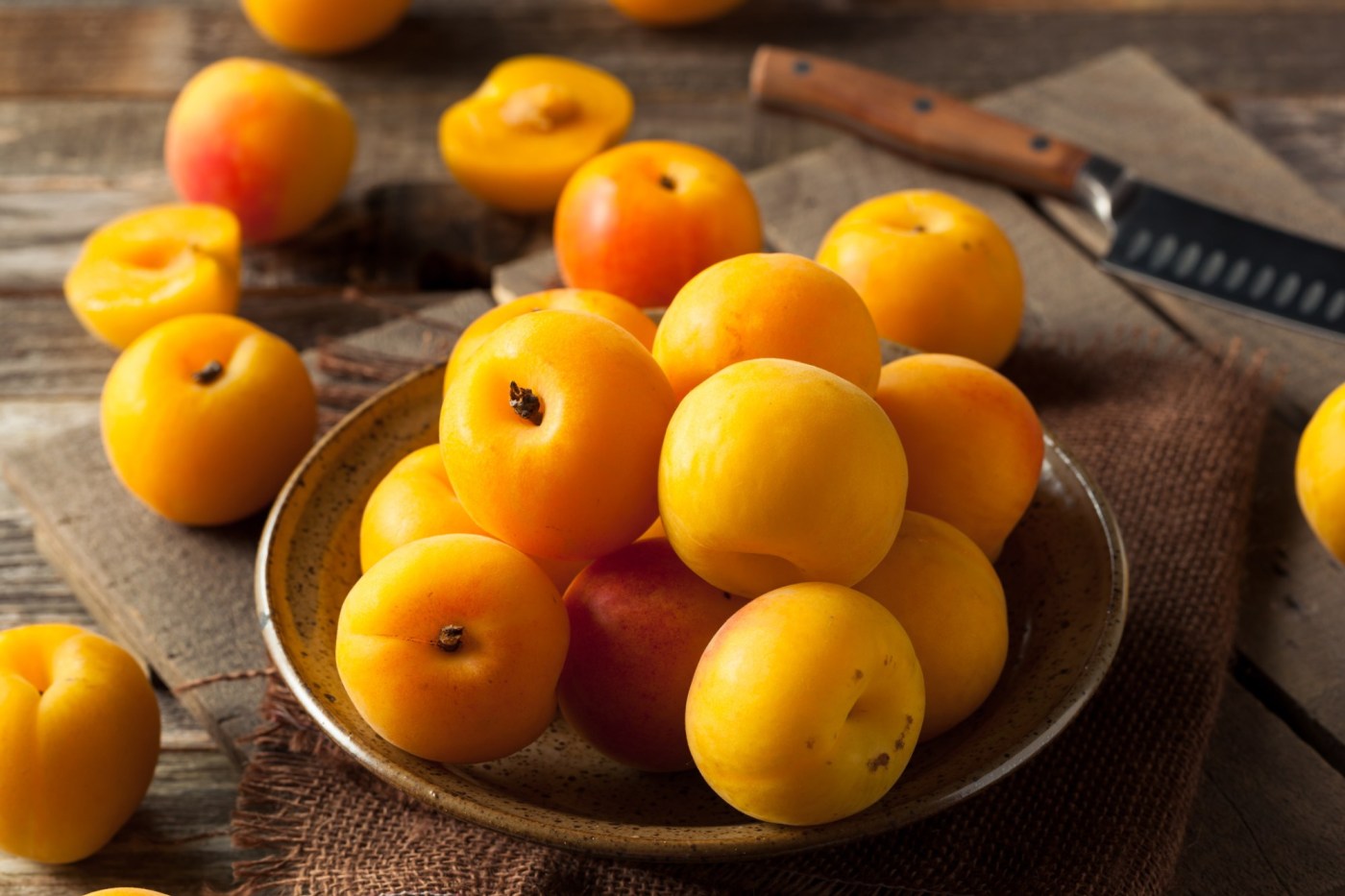
Q. What is the difference between plumcots, pluots, and apriums? Which varieties are the best?
Luther Burbank, the famous plant breeder, crossed an apricot (Prunus armeniaca) with a Japanese plum (Prunus salicina) and produced the plumcot. This colorful gem of deliciousness, commonly known as “Flavorella” was the first generation of interspecific hybrid stone fruit varieties. Floyd Zaiger continued this breeding work and has developed many new hybrids by crossing and back-crossing a variety of stone fruit species.
Related Articles
Invasive Japanese knotweed is not our friend
Pluots are plum-apricot hybrids that have been crossed with plums to produce a fruit that has predominantly plum characteristics. “Dapple Dandy” is one of the most well-known pluot varieties. It is larger than the average plum, has sweet golden flesh, and the skin has a translucent quality that is dappled purple and gold.
Apriums are plum-apricot hybrids that have been crossed with apricots to produce a fruit with more apricot-like characteristics. They are generally larger than most apricots, freestone, and are softer-fleshed. These are not often found in supermarkets because they don’t ship as well as other stone fruit. “Leah Cot” is one variety that we have grown with great success. The flavor and productivity are outstanding and we highly recommend this tree.
Necta-Plum is a nectarine-plum cross. This fruit resembles a colorful nectarine and has the sweetness of a plum. “Spice Zee” is a variety we grow and recommend.
Dave Wilson Nursery is a wholesale nursery in Modesto that works with Zaiger Genetics to bring these new varieties to commercial growers and homeowners. If you would like to find out more about these fruit trees, their website, www.davewilson.com, provides information on their latest varieties, chill hours, and specific pollinator requirements. Dave Wilson is a wholesale-only nursery, so you won’t be able to purchase directly from them (unless you want to buy 10,000 trees). They do have a section on Home Orchard Culture that is especially useful to home gardeners.
Q. My plum tree gave me too many plums and I don’t know what to do with them all!
If you can harvest the plums right before they are completely ripe, you can make plum jelly, jam, or preserves. Fully ripe, super sweet plums are great for fresh eating, but they tend to make oversweet, insipid preserves. Their lack of acidity sometimes affects setting up in jams and jellies, so I avoid using them in that capacity.
For ripe plums, we like to cut them in half and dehydrate them. If your tree overproduced and the fruit isn’t as flavorful, dehydration will concentrate the flavor and sugar and should improve the taste. This only works for varieties that are sweet throughout, including the skin. Tart-skinned plums will become unbearably acidic when dried.